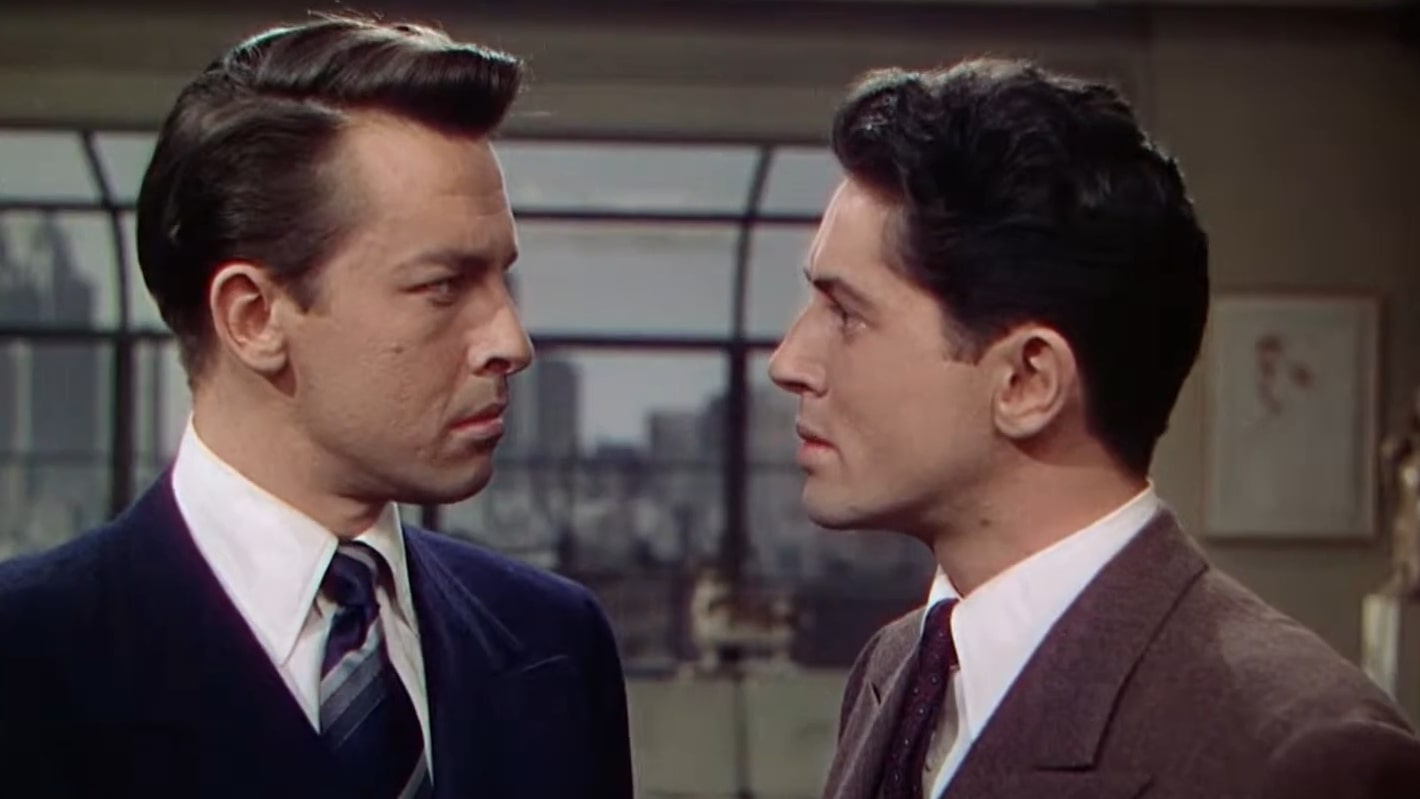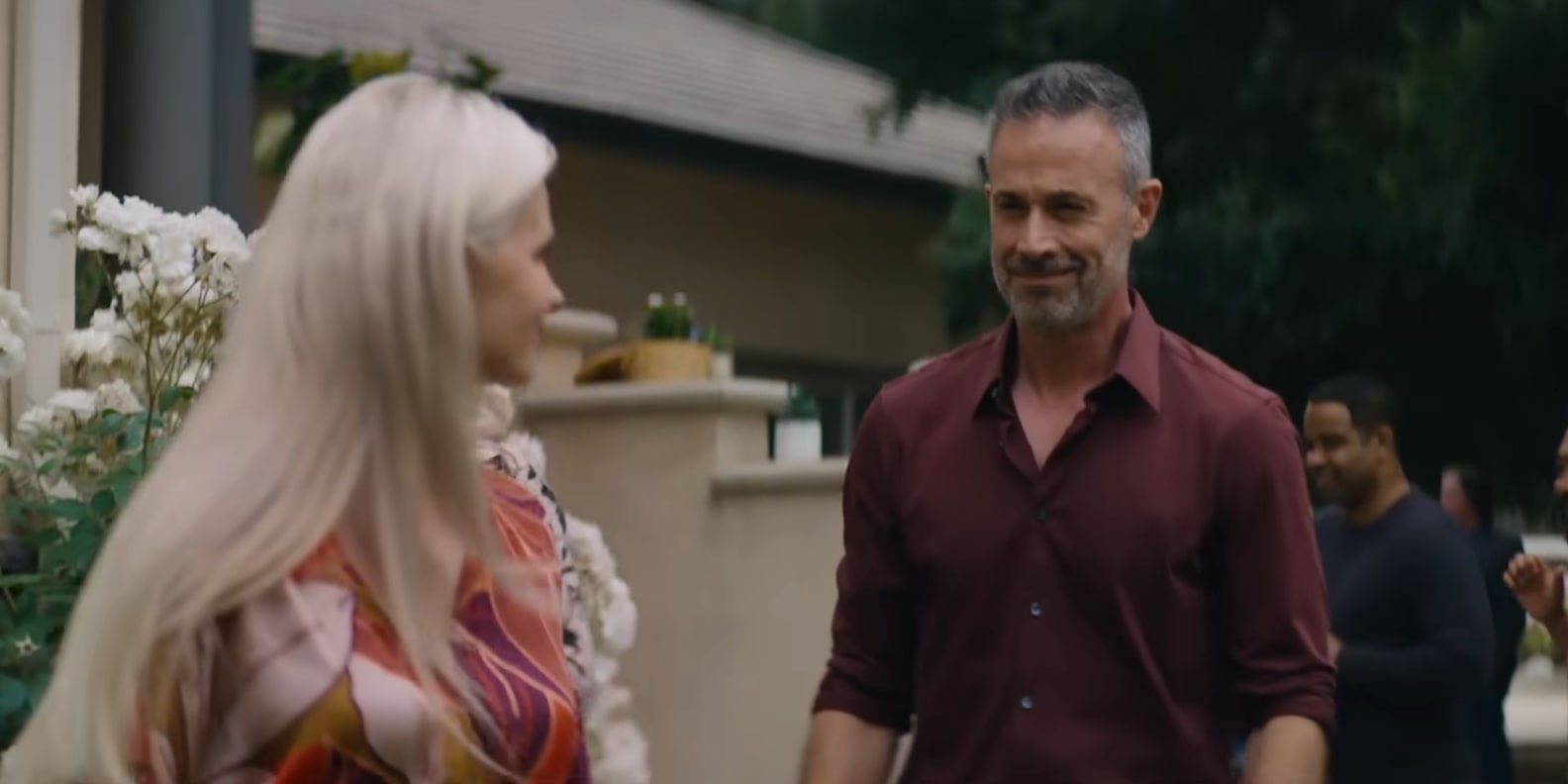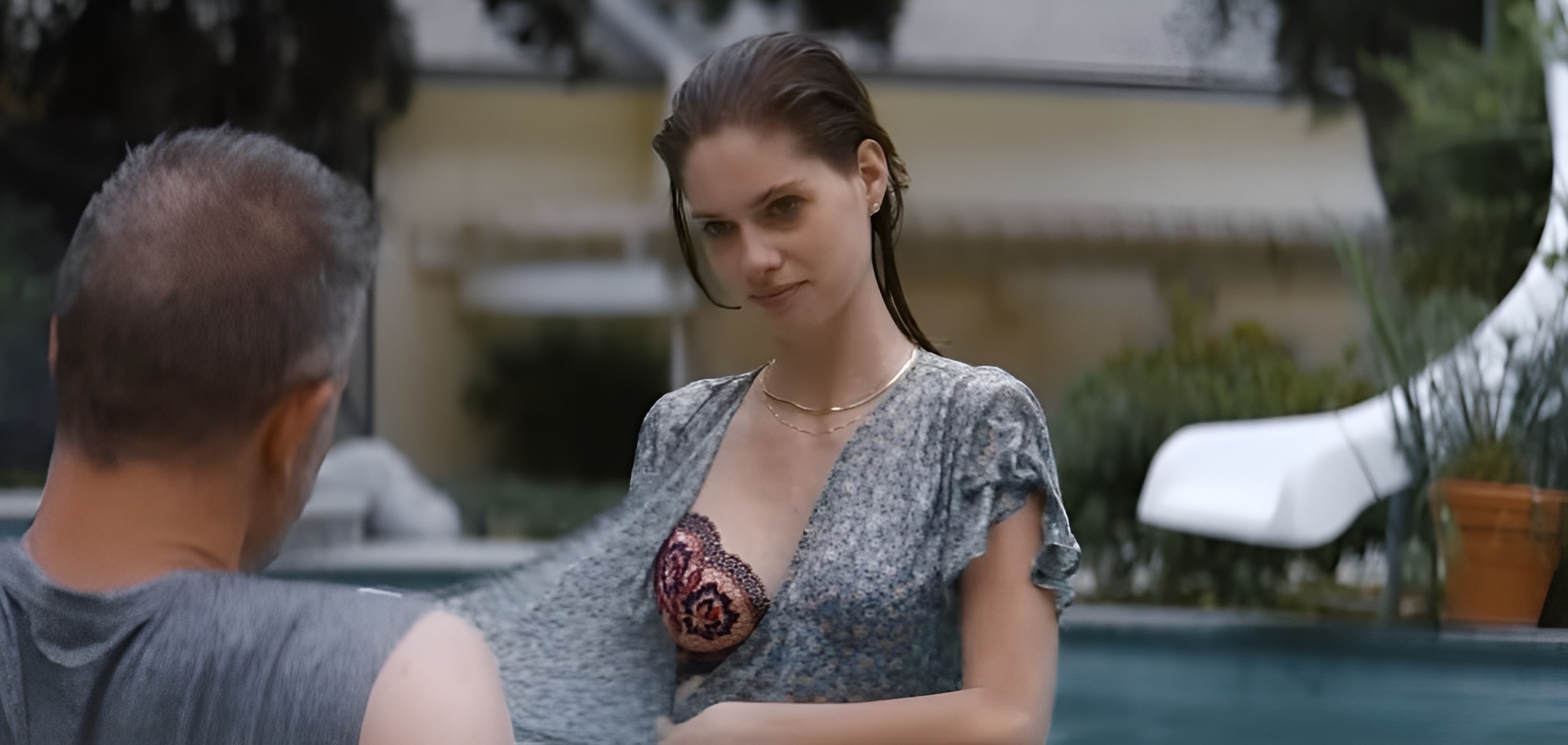‘The Girl in the Pool’ introduces us to a family man who finds his mistress murdered in the pool and hides her body, only to discover a surprise birthday party planned for him at the crime scene. Thomas seemingly has the perfect family life with two bright children and a loving wife. However, the meek manager hides a secret from them, namely, his affair with Hannah. As he secretly meets with her in his yard, Thomas is momentarily distracted and returns minutes later, only to find Hannah murdered in the pool.
Just as the distressed adulterer finishes cleaning up the scene by hiding her body in the pool’s storage chest, his wife announces his surprise birthday party at that very venue. With Dakota Gorman in the director’s chair, the narrative switches between thrilling high-tension sequences, amusing interactions, and over-the-top reactions that border on satirical humor, sparking curiosity regarding the movie’s inspirations.
The Girl in the Pool Blends Elements From Hitchcock’s Rope With Gorman’s Experimental Style
Creating an intriguing high-tension setup reminiscent of Alfred Hitchcock’s 1948 film, ‘The Girl in the Pool’ unfolds from Thomas’ increasingly blurry point of view into a mystery thriller with unexpected twists. The fictional story of the film is written by Jackson Reid Williams, which was somewhat altered and influenced by Gorman, editor Rob Bonz, and even lead actor Freddie Prinze Jr.

‘Rope’ follows the riveting series of events that transpire after intellectuals Brandon and Philip decide to fatally strangle their friend David to prove their superiority in committing the perfect murder. Much like in ‘The Girl in the Pool,’ they stuff his body in a large chest, and a party is hosted at its location. Like Thomas, Philip begins to intoxicate himself as a means of coping with his situation, and suspense is built between the protagonists and the various guests connected to the victim. It is important to note that ‘The Girl in the Pool’ may have taken a few strands of inspiration from the classic psychological thriller for its setup but largely treads its own unique path thereafter.
Thomas’ Decent Into Hysteria and Gorman’s Vision
A main feature of the film is Thomas’ distress and paranoia slowly taking over his mind despite his repeated self-pep talks to calm himself down and think clearly. Gorman opted to take the situation in a more humorous direction at times rather than continuously building suspense and raising the stakes. “For all intents and purposes, this film is a thriller, but…. Tom’s situation is so wildly absurd that it borders on comical, which is something we worked to lean into,” explained the director in an interview. “He’s inept, to say the least, and it’s really fun to watch Freddie step into that persona and fully unravel. During pre-pro, he and I would laugh about making Tom the ultimate beta.”

The filmmaker appreciated that the seasoned actors and crewmembers put faith in her abilities to piece the movie together within her own vision. This encompassed deviating from the original script and plan, introducing new storytelling elements and techniques, and bringing certain characters to the forefront. These included the flashbacks that Tom had about past events with Hannah, which rounded out her character more than was initially planned.
When asked about the flashbacks and his character’s unwinding underlined through them, Prinze Jr. credited Gorman and editor Rob Bonz, saying, “Those flashbacks weren’t scripted that way. That was all sort of her eye, her vision, and how she was wanting to break these scenes up and place those things in there.” He elaborated further and said, “So that tension is solely because of the two of them. They were the ones that implemented all of that. I got to see a screening of it, and it’s such a nice surprise when you’re seeing things that aren’t from the script. She had kind of told me they played with it, so I wanted to see what they’d done, and I just loved it. So that’s all credit to her.”

‘The Girl in the Pool’ tells a fictional tale of a murder and its attempted coverup with several parallels to the premise of Alfred Hitchcock’s ‘Rope.’ Thomas serves as the lens through which we piece together the mystery, with his flashbacks serving to flesh out characters while providing a window into his deteriorating mental state. The original story of the film was written by Jackson Reid Williams and, according to the team, underwent alterations at the hands of the editor and Dakota Gorman, who sought to lean into the unintentional comedy as well as the thrill.
Read More: Is Netflix’s Non Negotiable Based on a True Story?


You must be logged in to post a comment.